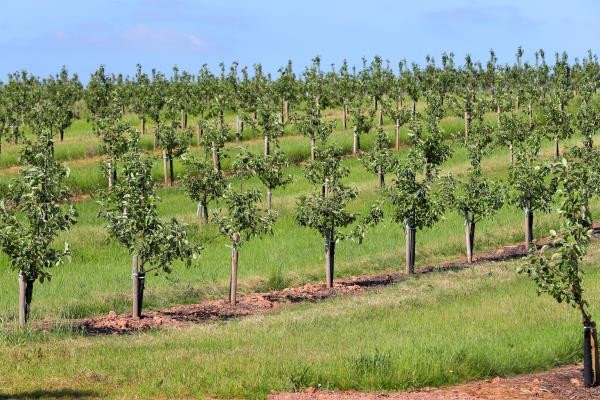Integrating trees into farming systems can provide farm businesses and the wider environment with a host of benefits, enhance farm productivity, increase wildlife, improve soil health and contribute to climate mitigation.

Were you unable to attend Groundswell Agriculture, or would you like to re-watch a talk? Visit the Groundswell Agriculture Youtube page here to catch up on a range of thought provoking talks.
How can trees improve soil health and reduce soil erosion?
Effective soil management is the key to all production systems, poor management means factors such as soil erosion can threaten the long-term productivity of agricultural land. Tree shelter belts and hedges can help improve soil structure whilst acting as a natural barrier to protect your natural resources against the elements.
- Deeper rooting trees and additional organic matter from leaf litter will improve soil stability and structure reducing the impact of intense rainfall.
- Trees and shrubs will act as a barrier against the wind, buffering the land against strong gusts that threaten to blow away both the topsoil and recently planted crop seeds.
The Woodlands Trust have published a case study which shows how strategically positioned shelterbelts can stop topsoil being eroded by wind and rain. Nottinghamshire arable farmer Richard Thomas shows how he has planted hedgerows and introduced a major tree-planting programme, alongside other measures to tackle soil erosion on the farm.
Download the case study here.
How can trees help reduce ammonia emissions?
Agriculture is the main source of ammonia emissions in the UK, with the majority coming from animal manure and fertilisers. Trees can trap ammonia emissions, by planning plantation around animal housing farmers can recapture ammonia emissions from livestock units.
Studies have shown that shelterbelts next to livestock units can reduce ammonia emissions by up to 10 per cent. Buffering important habitats by planting native trees in the path of emissions from livestock units can also help reduce the impact.
The Centre for Ecology and Hydrology (CEH), and Forest Research Agency (FR) have developed a calculator and guidance for farmers, planners and tree planters, so they can maximize the benefits of planting tree shelterbelts for ammonia recapture.
Further information
- For more information on intergrating trees into your farm visit the Woodland Trust. They can offer a wealth of support and work with you to create a bespoke planting scheme suited to your farm and needs. They will also help you look for other grants and funding, including stewardship schemes.
- Download the CFE guidance on Using trees and hedges to protect natural resources or catch up on the virtual workshop Farming With Trees.